
Amphiprion percula with Eggs
Picture taken April 2000, Nikon CoolPix 950 Digital Camera, Full Flash On April 1st, 2000 for the first time I spotted the bright orange eggs left by the clowns. This now confirms that they are indeed a mated pair. I haven't counted them but I guess would be about 75 eggs. Pictured here is the male clownfish carefully guarding them from the peppermint shrimps near by. The deeper orange color indicates these are not new, but a day or so old. |
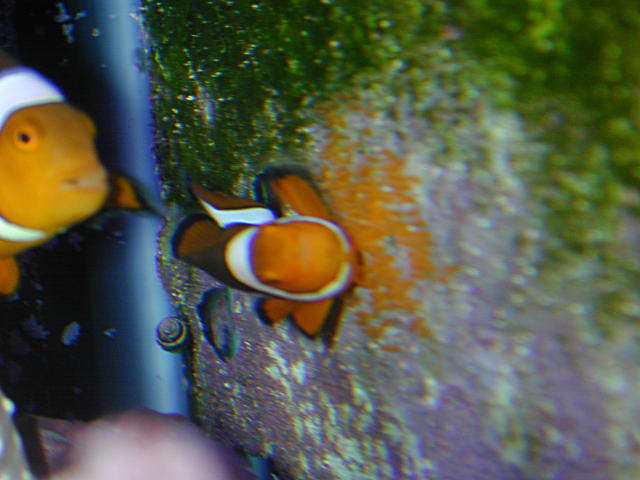
Amphiprion percula with Eggs
Picture taken April 2000, Nikon CoolPix 950 Digital Camera, Full Flash My clowns are getting good at this. This is the third batch of eggs. In this picture I think the male is fertilizing the eggs. He was swimming across them in cress cross patterns. To the far left is the female watching, the male is swimming on the eggs. This picture was taken on day 1 of the cycle (no eggs were present the day before) and the bright orange color of the eggs help to confirm this. |
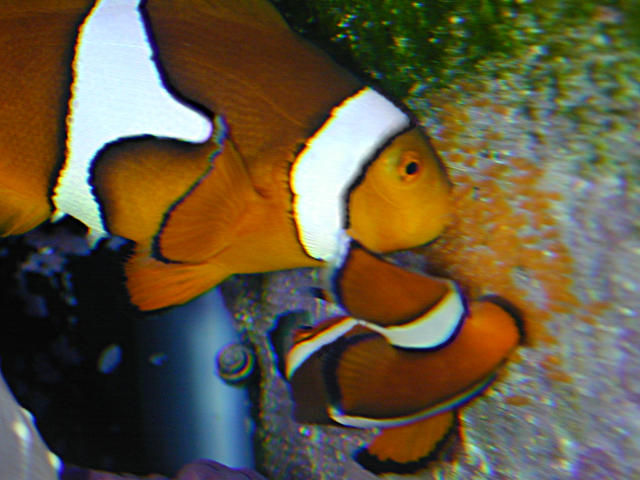
Amphiprion percula with Eggs
Picture taken April 2000, Nikon CoolPix 950 Digital Camera, Full Flash Not sure exactly what the female clown (left) is doing. She might be testing them for something. The male clown (right) seems to be fertilizing the eggs as he swims in circles over them. This picture was taken right after the picture taken above. |
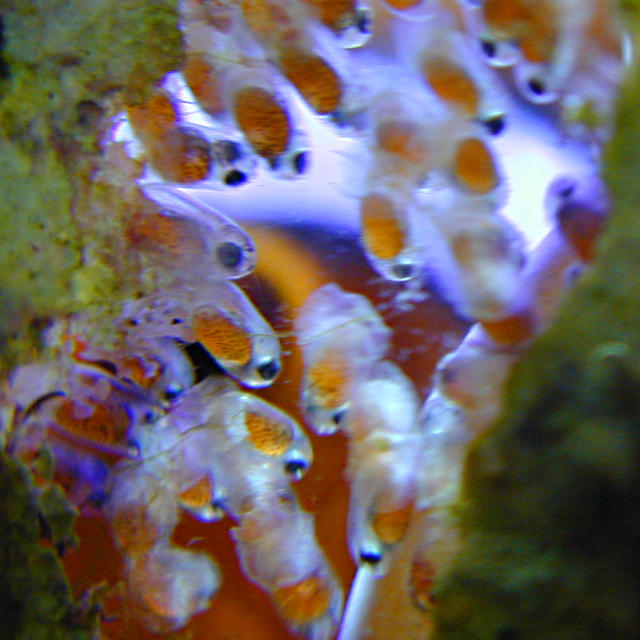
Amphiprion percula with Eggs. Picture taken March 2001.
Nikon CoolPix 950 Digital Camera, Tiffen +10 and +7 close-up lens, No Flash Here is a close-up of the eggs much later in development. You can clearly see the eye spots on the eggs and make out what looks like a spine. An adhesive disc holds the eggs in place. If you look carefully, the background image is the adult clownfish eye watching me through coralline alage opening on the glass. |
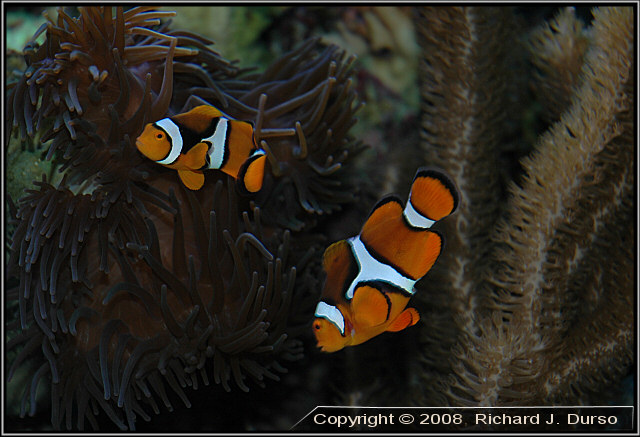
Amphiprion percula - Female (foreground) with swollen belly full of eggs.
Picture taken September 2008, Nikon D70 Digital SLR, Nikkor 18-70mm DX lens These clownfish spawn all the time however they typically spawn in the back of the tank where I can't easily get a picture of them. On the night of September 28th, 2008 I could see the female clownfish was stuffed full of eggs and the male clownfish was busy getting the spawning site ready. |
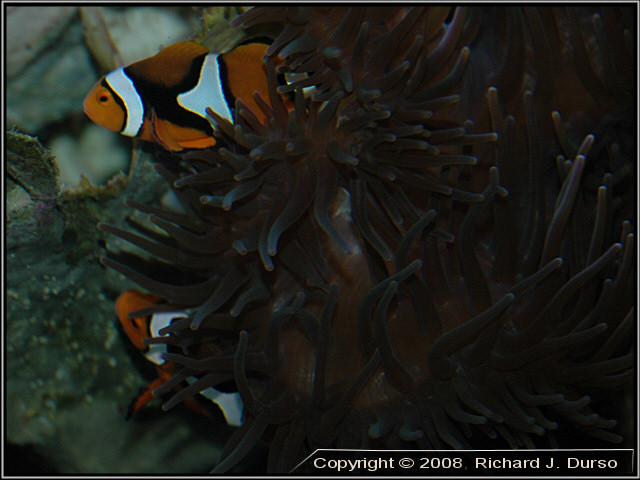
Clownfish getting the spawning site ready.
Picture taken September 2008, Nikon D70 Digital SLR, Nikkor 18-70mm DX lens The male is cleaning near the site where they will spawn while the female looks on and inspects the location. Once the site is ready the pair will start to bite the anemone to get it to retract. This helps to keep the area clear and lets the clownfish maneuver during their spawning dance. |
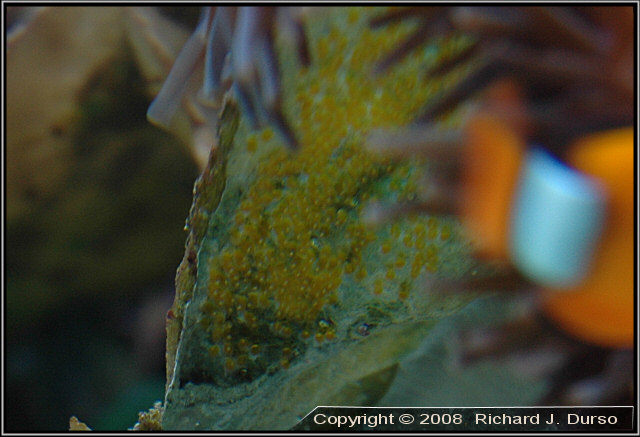
Freshly laid eggs, less than 24 hours old.
Picture taken September 2008, Nikon D70 Digital SLR, Nikkor 18-70mm DX lens These eggs are less than 24 hours old and being protected by the male clownfish who does not like me taking pictures of them. |
